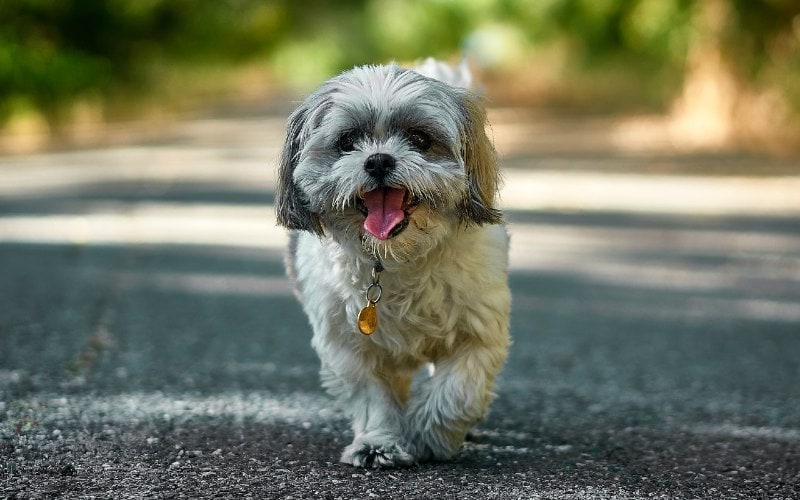How to Tell If Your Dog’s Anal Glands Are Full – 6 Vet Reviewed Signs
By Grant Piper
Updated on
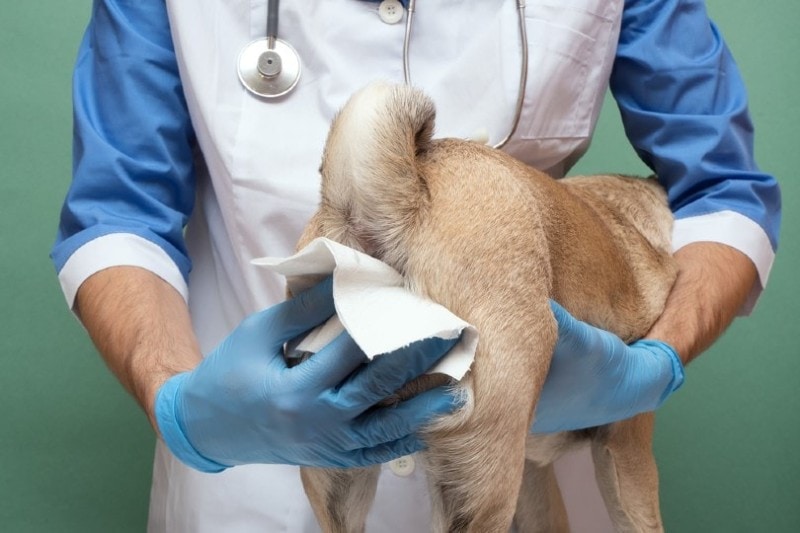
Some dog owners are blissfully unaware of their dog’s anal glands. Anal glands are small sacs that fill with pungent fishy-smelling liquid. This liquid is used to mark territory and can come out when a dog is frightened as an involuntary defense mechanism. The terms anal gland and anal sac tend to be used interchangeably however technically the parts that need emptying are the anal sacs. Most of the time, owners are none the wiser because anal glands are not a problem and never show any issues (or smells). However, some dogs’ anal sacs fill up periodically, and this can be a problem. If a dog cannot naturally empty their anal sacs, it can lead to unwanted smells, infection, irritation and pain. You should schedule a visit with your veterinarian if you have any concerns about your dog’s anal glands/anal sacs.
Here is how to tell if your dog’s anal sacs are full and how to get them expressed.
The 6 Signs Your Dog’s Anal Glands Are Full
1. Your Dog Is Licking Their Butt a Lot
One of the most obvious signs that your dog’s anal sacs are full is if they start licking their butt an abnormal amount. Dogs will turn around and really lick hard and might even look like they are nibbling their butt. This is because when anal sacs are full, they are uncomfortable, and your dog is trying to empty them via licking. If your dog is licking their butt for extended periods of time, it could be a sign that they have full anal sacs.
2. Your Dog Is Scooting on the Carpet or Grass

Another obvious sign that your dog’s anal sacs could be full is if they start scooting on the carpet or grass. Scooting is a behavior where a dog sits or squats and then starts walking forward with their butt on the ground. This is a common behavior that crops up for the same reason as the intensive butt licking. Your dog is trying to move their anal sacs to empty them physically. Scooting looks silly, but it can be quite important. Be aware that if your dog actually has full anal sacs, it could leave anal gland secretion on the carpet or on the lawn.
3. Your Dog Is Emitting a Foul Odor
Anal sacs are filled with a stinky liquid that is usually brown in color. If you smell something foul or stinky that has a tangy, fishy smell, you could be smelling anal gland material. Sometimes your dog will excrete this when they are fearful. However, if you smell this smell when your dog is behaving normally, it could be leaking out because the anal sacs are full.
4. Your Dog Is Chasing Its Tail or Keeps Looking at Its Butt
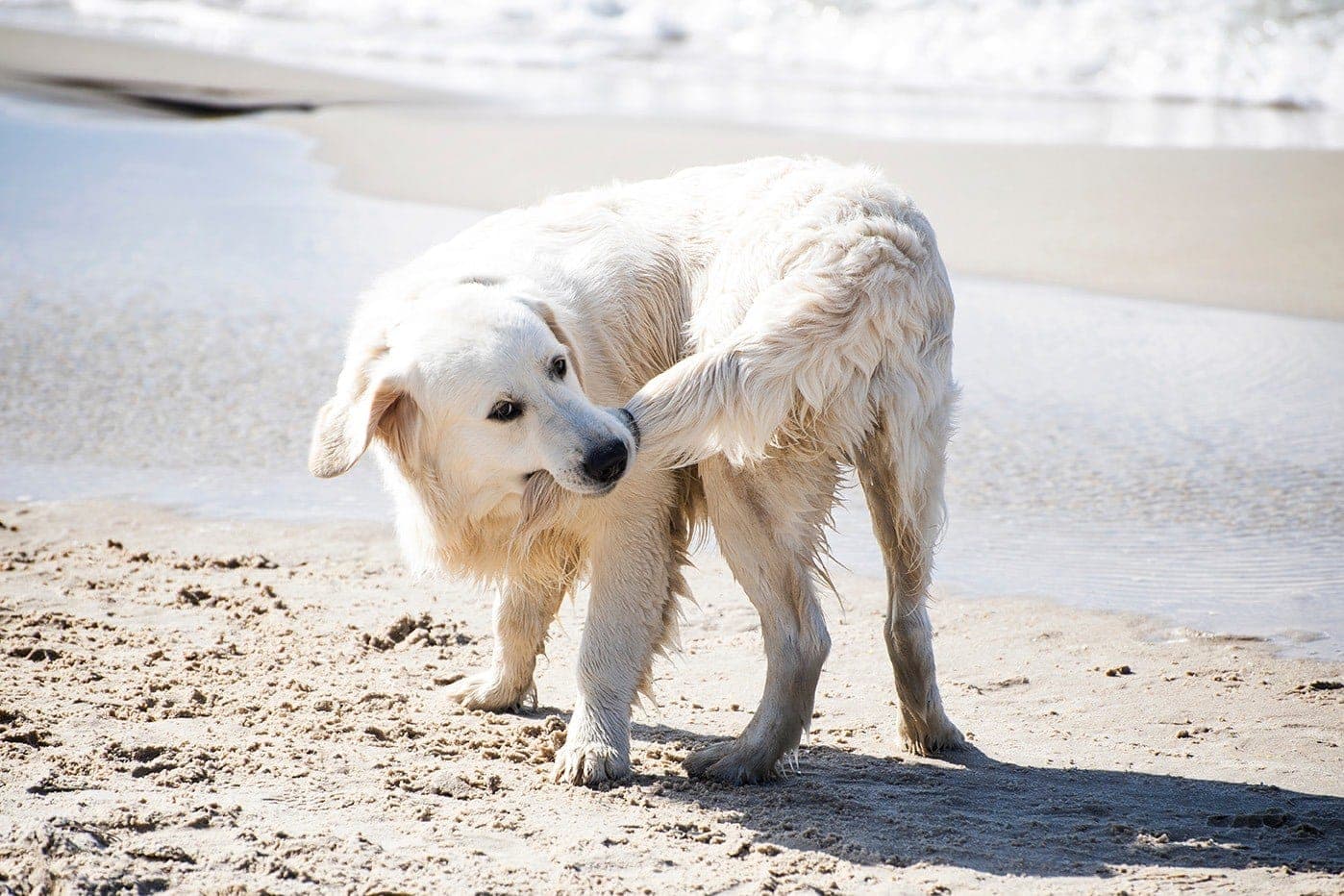
Sometimes dogs will not go straight for the licking. Other times, they will chase their tails or spend time staring at their butt as though something is wrong. Again, this behavior stems from the fact that your dog can feel something amiss with their anal sacs. If your dog never chases its tail or rarely pays attention to its butt and starts doing so out of the blue, it could be a sign that the anal sacs are full or filling up.
5. You Find Brown Spots on the Ground Where Your Dog Is
If you see small brown spots of liquid around your dog, such as on the couch, in their dog bed, or on the floor, it could be a sign that your dog is leaking anal gland secretion. These spots will be small, often brown, and smelly. If you can see these spots, it means that your dog’s anal sacs may be full.
6. You See Swellings
There are two anal glands, one on each side of the anus. They sit just inside the anal sphincter between two layers of muscle and are positioned at roughly 4 and 8 O’clock. They are not usually visible from the outside. If they become overly full or swollen you may be able to see redness, swelling or discharge just next to the anus. You should visit your veterinarian if you see any of these signs as your dog is likely to be in discomfort and need treatment.
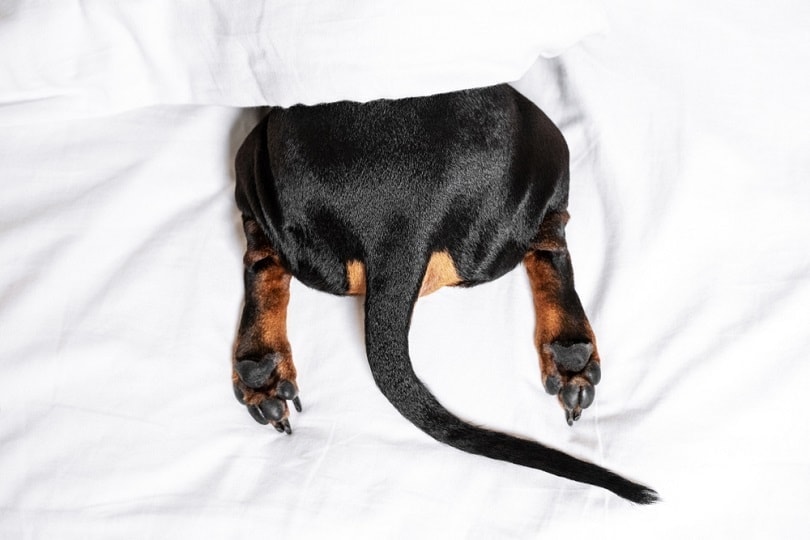
FAQ
Why Do Anal Sacs Fill Up?
Dogs naturally create anal gland fluid. Over time, this fluid builds up in the glands, which are located inside the anus. Dogs usually release this material each time they poop as a form of scent marking. Some dogs are not able to release their anal sacs as well as others. This could be genetic or just a quirk of individual dogs. Dogs that are not active, are overweight, have naturally deep set anal glands, thick fluid, diarrhea, constipation or low fiber diets could be at higher risk of having overfull anal sacs.
How to Get Your Dog’s Anal Sacs Expressed
The best way to get your dog’s anal sacs expressed (emptied) is to go to your vet’s office. The most effective way of emptying the glands is via internal expression and this must be performed by a veterinarian as it requires a gloved finger to be inserted into the anus to enable expression. The glands can also at this time be examined for inflammation, abscess and growths. A trained veterinary nurse or vet tech can express a dog’s anal sacs via external expression, squeezing the glands from outside the anus.
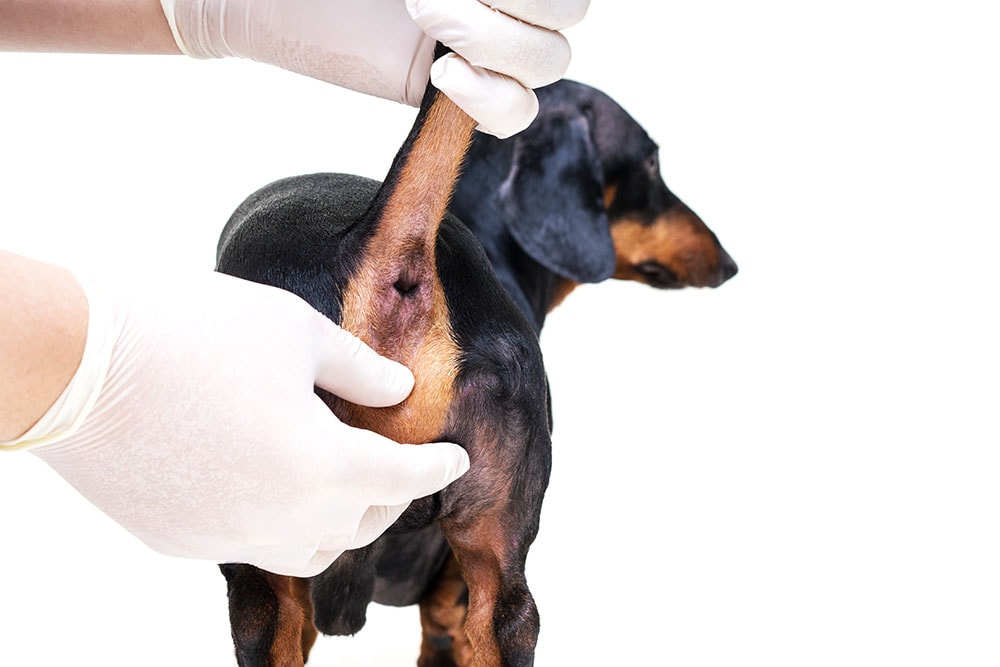
How Often Do Dogs Need Their Anal Sacs Expressed?
This will depend on each individual dog. Some dogs never need their anal sacs expressed. These dogs express their anal sacs on their own naturally and never need human intervention. Other dogs need their anal sacs expressed periodically during routine visits, like when they get a dental checkup or receive vaccines. Some dogs need their anal sacs expressed regularly, every 2 to 4 weeks. These dogs fill their anal sacs exceptionally quickly and have a hard time expressing them naturally.
Look out for the signs mentioned above, and if you see them cropping up regularly, it could be a sign that your dog’s anal sacs are filling up and remaining full.
What Are the Risks of Continuously Full Anal Sacs
Anal sacs that are not expressed properly can become swollen, engorged, or painful. They can leak smelly fluid out into your house, which can be unpleasant. Some anal sacs can even rupture or get infected if they are too full or remain full for too long. This can lead to a serious health problem that can even result in surgery. Some dogs need their anal sacs flushed out or even removed after a serious infection or rupture.
Making sure that your dog’s anal sacs are properly expressed will reduce the likelihood of these issues from occurring and will reduce the chance of any potential health risks.
Conclusion
Anal sacs are a small part of your dog’s overall anatomy, but they can pose big problems if they are not frequently emptied. If you have never paid any attention to your dog’s anal sacs and your dog is showing no signs of distress or odd behavior, you have nothing to worry about. However, if your dog is licking its butt, scooting, or leaking liquid, it could be a sign that the sacs are full and need to be emptied.
Featured Image Credit to: Yekatseryna Netuk, Shutterstock



